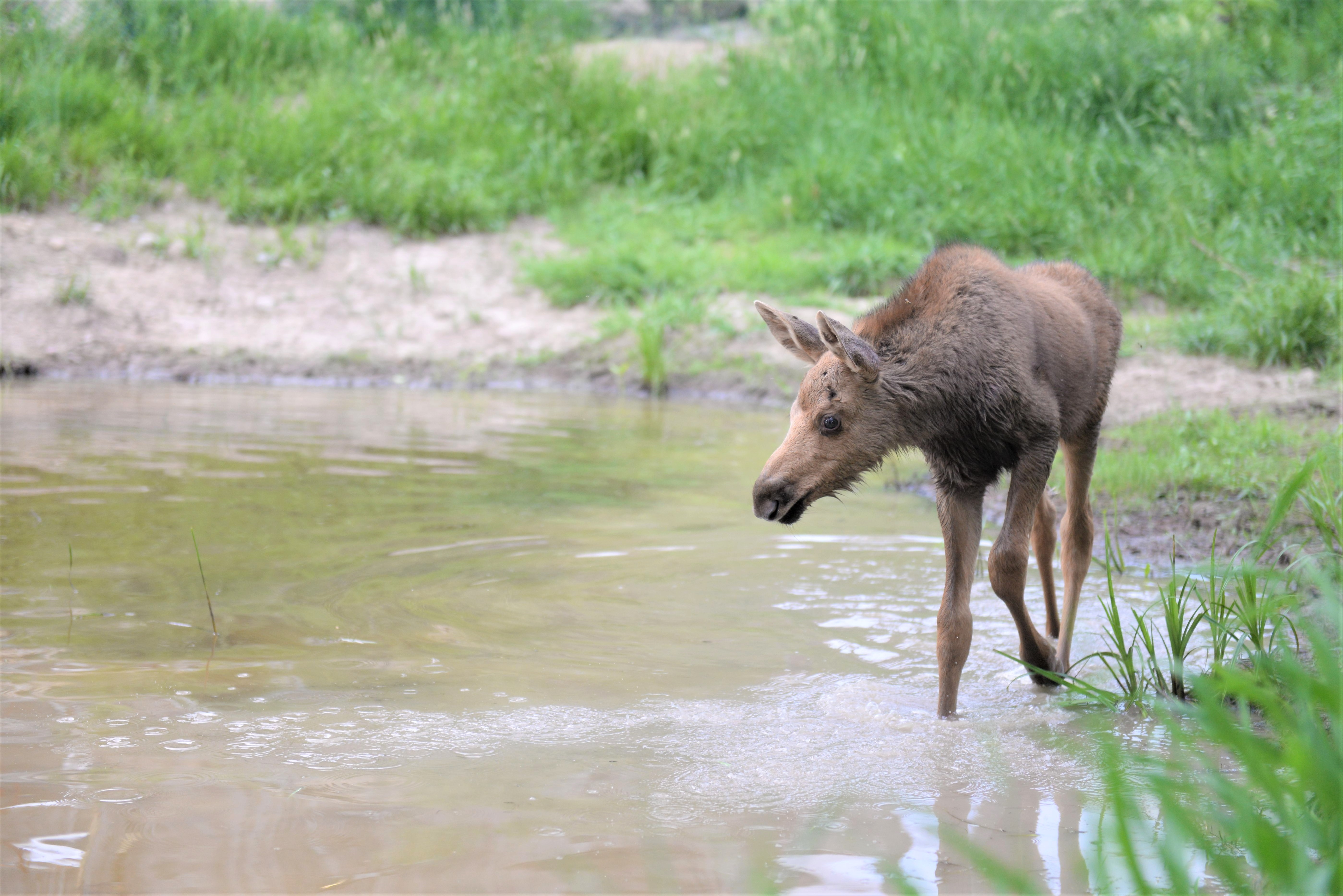Reproduction: Calves are born any time from mid- May to early June. Newborns generally weigh 12-16 kg, and are reddish-brown; they are hidden in secluded places when the mother forages. A cow moose defends her newborn calf vigorously. Cows give birth to twins 10 to 75 percent of the time, and triplets may occur.

Diet: Moose browse in winter on the new growth of balsam fir, as well as the twigs of deciduous trees such as birch, aspen, dogwood and hazel. During the summer season, moose primarily eat leaves and aquatic plants. They make use of mineral licks in spring through early autumn. Natural mineral licks that contain high mineral salt concentrations can be found in swamps, springs and mud. Salt deposits on roadsides (the result of salt being spread in the winter) are also visited.
Species Information:
Moose are the largest living member of the deer family. Often considered a symbol of Canada, the moose is featured on Ontario’s provincial coat of arms. Moose breeding season, sometimes referred to as “the rut,” includes a series of behavioural and physiological changes that start in mid-August. Breeding takes place from mid-September and, for the most part, is complete by about the second week of October. During the breeding season, cows are quite vocal with a loud, drawn-out call and bulls, when searching for receptive cows, use a low, deep, guttural grunt.



